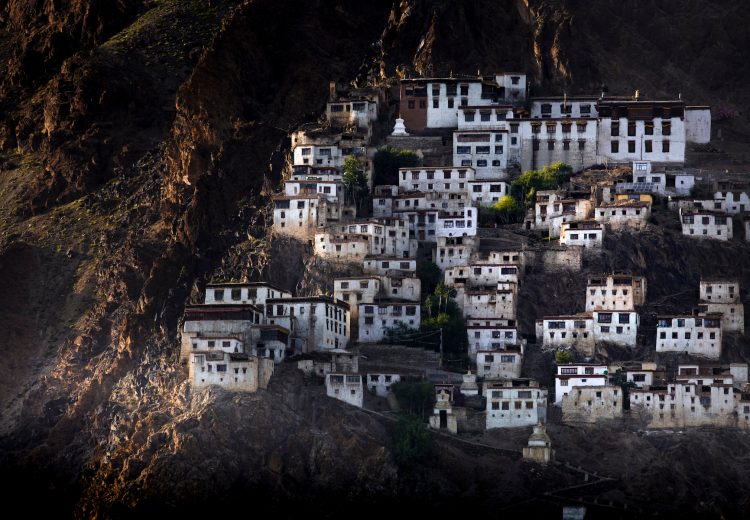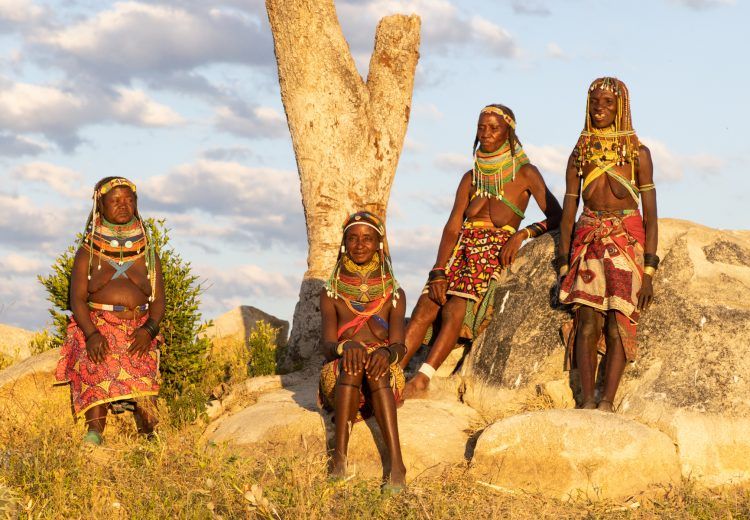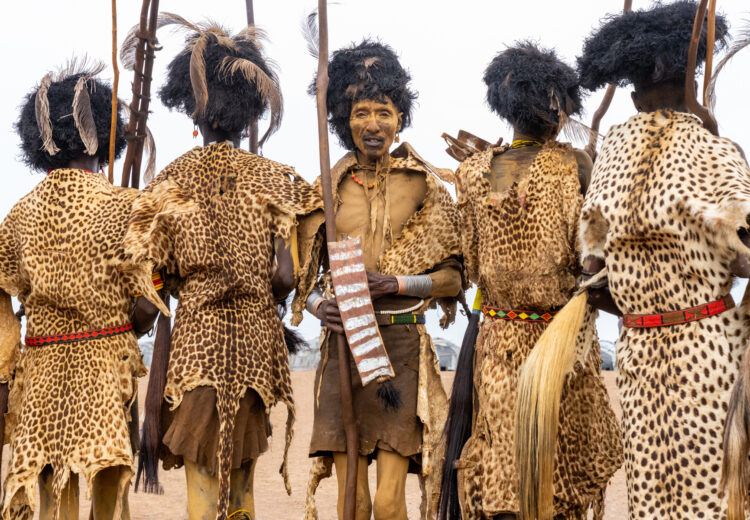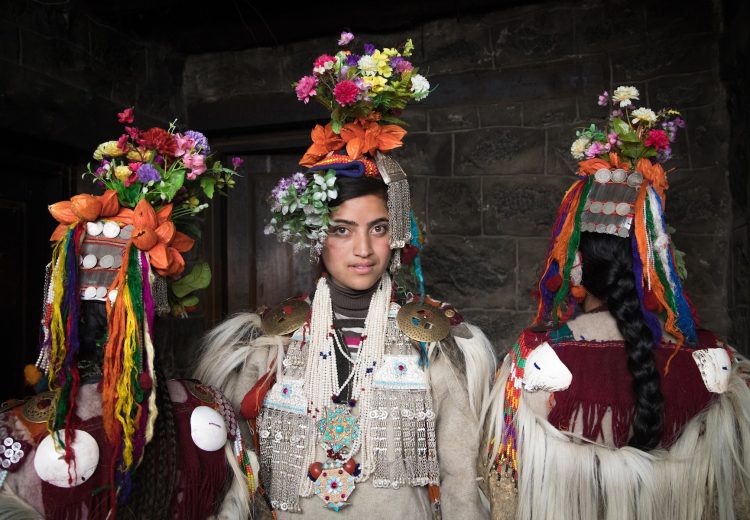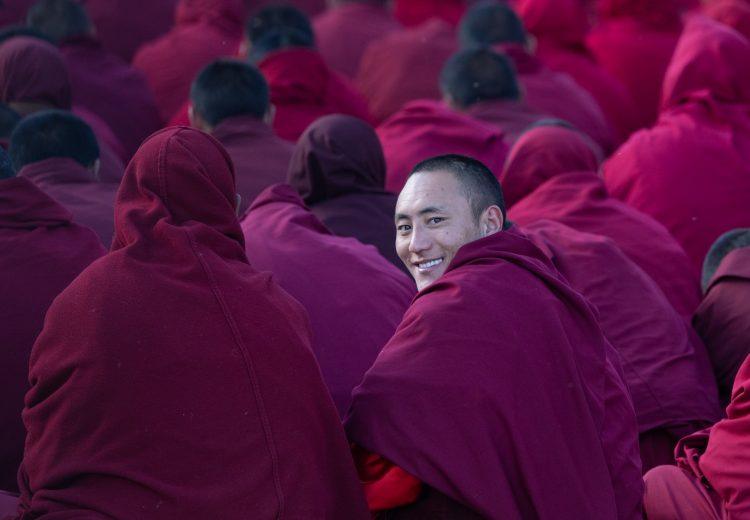Mongolia
EAGLE HUNTERS OF WESTERN MONGOLIA: Including the Altai Kazakh Eagle Festival at Sagsai



















At the last light of day a group of Eagle hunters ride to a nearby hill after a day of festivities at the Altai Kazakh Eagle Festival

From the remaining 2000 or so Przewalski's Horses left in the wild, the majority of them live in Hustai (Image by Harold Castro)

A traditionally dressed Kazakh eagle hunter in western Mongolia

Two Kazakh eagle hunters arrive at the Altai Kazakh (or Sagsai) eagle festival

A young Kazakh rides his horse.

Portrait of an elderly Kazakh eagle hunter with his bird in remote western Mongolia

A Kazakh Eagle Hunter prepares to hunt with his eagle high on a Mongolian mountainside (Image by Mr Manaljav)

Two of Hustai National Park's Przewalski's Horses (Image by Harold Castro)

The stunning scenery of Ulgii is home to some of the last families of Kazakh eagle hunters in Mongolia (Image by Mr Manaljav)

A family group of Kazakh Eagle Hunters (Image by Mr Manaljav)

Eagle hunters pose for photos high on a hill in western Mongolia

Portrait of a young Kazakh girl in her yurt in western Mongolia.

Kazakh eagle hunters develop a very close relationship with their hunting eagles, who are treated like family (Image by Mr Manaljav)

A group of Przelwalski Horses in Hustai National Park, Mongolia (Image by Harold Castro)

Backlit photo of a Kazakh eagle hunter and his Golden Eagle in remote western Mongolia (Image by Mr Manaljav)

Portrait of a young eagle hunter in Bayan Ulgii

An elderly eagle hunter with his eagle, horse and yurt
|
Saturday 14th September –
Thursday 26th September 2024 Leaders: Inger Vandyke and a local guide |
13 Days | Group Size Limit 7 |
|
Monday 14th September –
Saturday 26th September 2026 Leaders: Ingrid Koedood and a local guide |
13 Days | Group Size Limit 7 |
MONGOLIA PHOTOGRAPHY TOURS: EAGLE HUNTERS OF WESTERN MONGOLIA WITH WILD IMAGES
Imagine a world that is wild, untouched and so remote that it is one of the least inhabited areas of the least inhabited countries on earth. A world where the shadows of clouds dance with shards of light from the sun across vast, treeless expanses. This is western Mongolia. A world that is home to a group of people that have developed a unique relationship with one of the world’s most revered birds of prey, the Golden Eagle. This is the world of the Kazakh Eagle Hunters, who not only survive out in this amazing landscape, but who have developed a relationship with eagles to hunt with them for prey, including rabbits and even foxes.
The tradition of eagle hunting in Mongolia is believed to have been developed in central Asia more than 1800 years ago. Since then the lives and traditions of Mongolia’s eagle hunters have defied history, geography and dramatic political change. Only female Eagles are used to hunt as they are considered more valuable due to their larger size and powerful hunting prowess. During the time the eagle is captive, an extraordinary bond is formed between the hunter and his bird. It is, however, a relationship that is only temporary. After around ten years, a hunter will take his eagle far away from his home and into the mountains. There he will stay with the bird until sunset and he will release it, returning to his home in the dark so the eagle is unable to follow him. This separation allows the eagle to ‘re-wild’ and have chicks of its own.
Today in Mongolia there are still about 250 Eagle hunter families in total and the Sagsai region of the Bayan-Olgii (or Bayan-Ulgii) province acts as the heartland for these hardy nomadic people.
Wild Images is embarking on a very special journey to both live alongside eagle hunter families and attend the annual Kazakh Altai Eagle Festival at Sagsai, where the eagle hunters gather to compete in hunting competitions and games, and show off their ability to hunt.
Our Eagle Hunters of Western Mongoliua photography tour will start in Mongolia’s capital, Ulaanbaatar. From 1924 until 1990, during which time Mongolia was a vassal of the former Soviet Union, Ulaanbaatar had most of its Mongolian lamaseries and shrines swept aside to make way for uniformly drab, Soviet-style boulevards and buildings. Modern day Ulaanbaatar, or UB as it is affectionately known, with its grey facades and outlying ‘suburbs’ of gers (yurts) housing recent migrants, definitely has a very frontier-town feel and it offers a stark contrast to the wild, empty, remote beauty of most of Mongolia.
On our first day in Ulaanbaatar we will make our way to the beautiful monastery (or khiid) of Gandan. Its full name ‘Gandantegchinlen’ translates roughly into ‘the great place of complete joy’ and this beautiful, Tibetan style monastery is one of the few of its kind that survived the religious purges, inspired by the Soviet Union, in the 1930s. We will walk the squares and prayer halls of this wonderful monastery taking photos before we move on and visit the gigantic Sukhbaatar Square that was constructed in honour of Damdin Sukhbaatar, the hero of the revolution which secured Mongolia’s independence from China. We will then make a visit to Zaisan Hill to get an overview of the city, the Tuul river valley and the surrounding hills before we return to our hotel for a welcome dinner.
The following day we will transfer to the airport to take a morning flight to the remote town of Hovd, where our drivers will collect us and take us out to the Tsambagarav Mountain National Park, where we will continue into the region of Tavan Belchir, or the five pastures, where we will meet our host family of Kazakh Eagle hunters. This sparsely populated, beautiful region of western Mongolia is crowned by two permanent snow-capped peaks – Tsambagarav Uul (4,025 metres or 13,206 feet) and Tsast Uul (4102 metres or 13,459 feet).
“Fast horses and fierce eagles are the wings of the Kazakh people” – old Kazakh proverb.
Over the coming days we will live alongside a family of Kazakh eagle hunters in large Kazakh yurts, that are a more elaborate and distinct than basic Mongolian gers. While living with an eagle hunter family we will learn how these incredible people survive in such a remote part of the most sparsely populated country on earth. We will also watch them hunting with their magnificent birds of prey. From nearby hills we will join hunters as they scan this incredible landscape with their birds, looking for creatures to hunt. If their sharp-eyed eagle spots a hunting target, it signifies the sighting by calling out. The hunter then releases his eagle to fly off and capture the potential meal it has spotted.
At other times we will join our host family in their yurt to photograph the every day life of a Kazakh eagle hunting family as we watch them prepare food, look after children and enjoy family discussions in the same way they have done for generations. Typically Kazakh families live together in a single yurt, which holds items that are important for their nomadic lifestyles including milk churns, meat mincers, bed frames and family portraits. Beds and clothing are often made of skins of yaks or wolves. Horses are central to the nomadic Kazakh way of life and while we are living with families we may be invited into a warm and beautifully decorated family yurt to drink some fermented mare’s milk which is a staple part of the Kazakh diet. For Kazakh people daily life includes feeding and caring for their herds of yaks, goats and horses and all members of a Kazakh family are expected to help out with chores that are vital to their traditional lifestyle.
If you ask even a Kazakh from Kazakhstan where the most traditional Kazakhs live, they will generally mention the Tsambagarav Mountains in far northwestern Mongolia, rather than anywhere in Kazakhstan itself. Living with a family of true Kazakh hunters for three nights will be an unforgettable experience as we learn about their lives in this incredible region first hand.
From the Tsambagarav we will then transfer to another homeland of eagle hunters at Tsengel Soum to experience life with another eagle hunter family.
Our Eagle Hunters of Western Mongolia photography tour will climax with a visit to the spectacular Altai Kazakh Eagle Festival at Sagsai, where we will spend two days enjoying and photographing the festivities including hunting competitions and the wild game of Buzkashi.
As an initiative of the local population, the Sagsai region began to celebrate the Eagle Hunting culture with a festival over a decade ago. During the Eagle Festival, hunters are judged for their traditional attire, the equipment of the eagles and the horses they use to hunt.
Festival competitions include the game of Kokbar, or a tug of war played on horseback using a goat pelt as the rope. Another game, the Tenge Alu, is a contest where hunters attempt to pick up a token from the ground without getting off their galloping horses. Women also get involved by racing their horses against men in a tournament called a Kyz kuu, a flirtatious event where, if the man wins, he gets a kiss. If the woman, however, beats her male rival, she turns and races him back down the field with a whip in which to strap him – a highly entertaining event for all of the festival guests!
The Wild Images type of holiday, where we stay with local people, is very important for supporting the family economy of people living in this region, especially for the local nomadic hunter families who have the opportunity to increase their income.
Flights out of western Mongolia are famous for delays (this is a mountain area and unsuitable conditions for flying are not uncommon). As a result it is very unwise to plan on flying back to UB and departing internationally the next day. You can end up missing your flight and having to pay again!
So, following our visit to western Mongolia and Ulaanbaatar, we have arranged a visit to the beautiful Hustai National Park, situated well to the southwest of the city and home to the wild and pretty Przewalski’s Horse, a species that has been brought back from the edge of extinction.
After our return to Ulaanbaatar, we will be transferred on a two hour trip to Hustai. Our first excursion will be to visit the remarkable Neolithic graves of Öngut, which date back to the 6th or 7th century A.D. We will then make our way to the lovely Tuul River and its willows. Amur falcons are relatively easy to see here. Later that day we will take a drive to search for some of the free roaming herds of the Takhi, or Przewalski’s Horses. Hustai is one of only three locations where this extinct (in the wild) species of horse was reintroduced after they disappeared in the 1960s due to hunting. They have never been domesticated and the Przewalski’s Horses in Hustai remain the only true wild horses in the world today. During the day these beautiful horses usually stay high in the mountains and are rather difficult to see, whereas very early and late in the day they usually come down into the valleys for water and to graze. The chances of seeing these pretty wild horses is high during our late afternoon drive.
The next morning, we will visit community groups living in the buffer zone of the Hustai and learn how they keep their livestock. We will enjoy a traditional lunch of ‘buuz’ (meat dumplings) with the local people who work as conservation partners of the Hustai National Park before returning to Ulaanbaatar for a final night.
This tour can be taken together with: MONGOLIA’S FORGOTTEN REINDEER HERDERS
Accommodation, Food & Road Transport
The hotel in Ulaanbaatar is of a good standard. In western Mongolia we will be staying in simple gers (yurts) with local families with two or more people per ger. Beds are simple and washing and toilet facilities are basic. At Hustai we will stay in gers at a ‘tourist ger camp’ with more elaborate gers and shared bathroom facilities. Food while staying with the eagle hunters will be simple but plentiful. Kindly note that on this unusual journey we are unable to cater for a vegetarian diet.
Road transport is by 4WD vehicles as roads are often quite rough.
Walking
The walking effort on our Eagle Hunters of Western Mongolia photography tour is mostly easy, but there will be opportunities for short but more demanding hikes in the areas where the eagle hunters live in order to capture those special images of hunters and eagles on wild ridges or other great spots.
Climate
At this season the weather conditions in both western and central Mongolia are usually cool, dry and sunny, with typical daily maxima being between 10-15°C (50-59°F). At night conditions are fairly cold (between 5°C or 41°F and a little below freezing), but nothing remotely like the very cold conditions prevailing during the Mongolian winter months.
Photographic Equipment for our Eagle Hunters of Western Mongolia Photography Tour
If you use a full frame DSLR or mirrorless camera, for much of the time, when photographing the eagle hunters, you will want to cover focal lengths of around 24-105mm and 70-200mm. A really wide angle lens will also be useful.
For photographing hunters from a distance, consider bringing a larger zoom or prime telephoto lens for photography, of up to 400mm.
Those using crop-sensor cameras should adjust the suggested focal lengths as appropriate.
If you bring a good quality bridge camera instead of a DSLR or mirrorless camera, it will be best if it has an optical zoom of 18-20x or more, combined with a reasonable wide-angle at the other end of the zoom range.
If you have a phone or tablet that can be used for photography, you may find one useful around people.
Similarly if you have a Polaroid camera like the Leica Sofort or an Instax Mini, these are wonderful to have on hand when you spend time with the eagle hunters. If you decide to bring one of these, please bring lots of film with you as the photographs you produce will be quite popular!
Be sure to bring plenty of spare battery power. There will likely be only limited access to power when we stay with the nomads.
If you would like to talk over suitable equipment, please contact our office. We will be happy to advise.
Photographic Highlights
- A chance to live alongside nomadic Kazakh Eagle Hunters in their remote family yurts, experiencing their everyday lives
- Join award winning photographer Inger Vandyke to meet the Eagle Hunters and engage with them for some extraordinary photographic portraits
- A true photographic adventure in the wildest regions of western Mongolia
- Visit the Altai Kazakh (or Sagsai) Eagle Festival to photograph the Eagle Hunters practice their hunts with their trained Golden Eagles
- Learn about the unique relationship between the Kazakhs and their hunting eagles
OUTLINE ITINERARY
- Day 1: Morning tour start at Ulaanbaatar airport. Sightseeing and photography in the city.
- Day 2: Morning flight to Hovd in western Mongolia. Transfer to Tavan Belchir area of Tsambagarav Mountain National Park.
- Days 3-4: With the eagle hunters of Tavan Belchir.
- Day 5: Transfer to Tsengel Soum.
- Days 6-7: With the eagle hunters of Tsengel Soum.
- Days 8-9: Saagsai area, enjoying the Altai Kazakh Eagle Festival.
- Day 10: Morning flight from Olgii (Ulgii) airport to Ulaanbaatar. Transfer to Hustai National Park.
- Day 11: Exploring Hustai National Park.
- Day 12: Hustai, then return to Ulaanbaatar.
- Day 13: Morning tour end at Ulaanbaatar airport.
To see a larger map, click on the square-like ‘enlarge’ icon in the upper right of the map box.
To see (or hide) the ‘map legend’, click on the icon with an arrow in the upper left of the map box.
To change to a satellite view, which is great for seeing the physical terrain (and for seeing really fine details by repetitive use of the + button), click on the square ‘map view’ icon in the lower left corner of the ‘map legend’.
PRICE INFORMATION
Wild Images Inclusions: Our tour prices include surface transportation, accommodations, meals and entrance fees.
Our tour prices also include all tips for local guides, drivers, camp staff and accommodation/restaurant staff. We also include payments to local people who are willing to be photographed.
Our tour prices also includes these flights: Ulaanbaatar-Hovd and Olgiy-Ulaanbaatar.
Deposit: 20% of the total tour price. Our office will let you know what deposit amount is due, in order to confirm your booking, following receipt of your online booking form.
TO BOOK THIS TOUR: Click here (you will need the tour dates)
2024: confirmed £4870, $6290, €5720, AUD9490. Ulaanbaatar/Ulaanbaatar.
2026: provisional £4950, $6390, €5810, AUD9640. Ulaanbaatar/Ulaanbaatar.
Single Supplement: 2024: £140, $190, €170, AUD280.
Single Supplement: 2026: £140, $190, €170, AUD280.
The single supplement applies to the nights in Ulaanbaatar only. Elsewhere, single accommodation is not available.
If you are travelling alone, the single supplement will not apply if you are willing to share a room and there is a room-mate of the same sex available.
This tour is priced in US Dollars. Amounts shown in other currencies are indicative.
Air Travel To & From The Tour: Our in-house IATA ticket agency will be pleased to arrange your air travel on request, or you may arrange this yourself if you prefer.
MONGOLIA PHOTOGRAPHY TOURS: EAGLE HUNTERS OF WESTERN MONGOLIA: DETAILED ITINERARY
Day 1 Our Eagle Hunters of Western Mongolia photography tour will begin this morning at Ulaanbaatar’s Chinggis Khan Airport.
Transfers to the hotel will be provided and, subsequently, we will enjoy an excursion to the Gandan monastery, Sukhbaatar Square and Zaisan Hill before returning to our hotel for a welcome dinner.
Overnight: Bayangol Hotel
Day 2 After breakfast, we will transfer to Chinggis Khaan Airport for our domestic flight to Hovd in far western Mongolia.
After our arrival in Hovd, a town rather than a city and which dates back to the era of Chinese control over Mongolia under the Manchu dynasty, we will drive to the Tsambagarav Mountain National Park to stay with a family of Kazakh Eagle Hunters in the Tavan Belchir area, which is sometimes known as ‘The Five Pastures’.
Overnight: Stay in a guest yurt, hosted by a Kazakh family who practice the art of hunting Red Foxes with their Golden Eagles.
Days 3-4 Over the following two days we will explore the surroundings of the eternally snow-capped peaks of Tsambagarav Uul (4,025 metres or 13,206 feet) and Tsast Uul (4102 metres or 13,459 feet).
Hosted by traditional Kazakh families, we will enjoy wonderful photography of our spectacular surroundings and the activities of the hunting families, while staying in traditional Kazakh yurts (Being Turkic peoples, Kazakhs call their dwellings yurts, while Mongols say ‘ger’).
Overnights: guest yurt.
Day 5 After breakfast, we will drive to Tsengel Soum, which is home to a number of eagle hunter families. A picnic lunch will be enjoyed en route.
Overnight: We will stay in the guest yurt of one of the families.
Days 6-7 We will enjoy two days of exploring the region of Tsengel Soum and learning about Kazakh eagle hunters while living alongside them in a traditional yurt.
Overnights: guest yurt.
Days 8-9 After breakfast on Day 8, we will depart to a location near Sagsai village.
The Altai Kazakh Eagle Festival will start today and we will spend two days enjoying the spectacle of eagles being released from the hills and hunting for fox skins in tow behind a horseman. Horse games such as the Central Asian sport of bouzkhashi, essentially a horseback tug-of-war involving a goat carcass, will also be played and it can be quite wild at times. We will also witness the numerous other activities of the festival, which officially starts the eagle hunting season that extends into the Mongolian winter.
Overnights: guest yurt.
Day 10 After breakfast we will transfer to the Olgii (or Ulgii) airport for our flight back to Ulaanbaatar.
After our arrival at Ulaanbaatar, we will be transferred to Hustai National Park, around two hours drive out into the stepoes to the southwest of the city, for a two nights stay. We should arrive in time for some initial exploration. Overnight: Hustai Ger Camp
Day 11 During our explorations at Hustai we will visit the remarkable Neolithic graves of Öngut, which date back to the 6th or 7th century A.D., and admire the beautiful landscapes, including the Tuul river valley.
The highlight here will be our drives in search of some of the free roaming herds of Takhi, or Przewalski’s Horses. We will also visit to the community groups assisting with the conservation efforts at Hustai and enjoy a traditional lunch of buuz (meat dumplings) with a local family.
Overnight: Hustai Ger Camp
Day 12 After some more exploration at Hustai we return to Ulaanbataar for an overnight stay.
Overnight: Bayangol Hotel
Day 13 Our Eagle Hunters of Western Mongolia photography tour will end will end after breakfast with a transfer to Chinggis Khaan Airport.
Other Wild Images Tours for People Photography
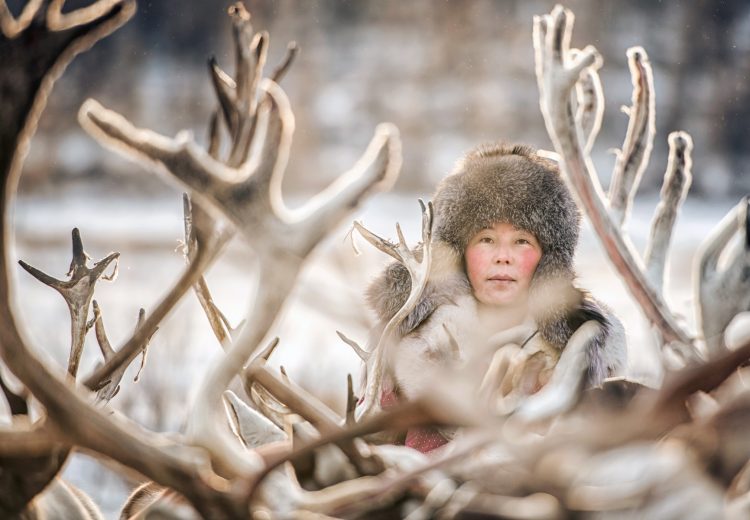
Mongolia
September-October 2024




















